Selfies have become so ubiquitous in this day and age that it’s easy to forget they’re a recent invention — although people have been attempting self-portraits since the invention of the camera. The word selfie didn’t appear in our lexicon until 2002, and it wasn’t until 2012 that it gained major traction, making Oxford’s word of the year in the following 2013. No one thinks twice about snapping a selfie these days for a friend, social media, or a dating profile. There was once a time when you’d be discreet about it out of embarrassment, but those days are long gone.
Ubiquitous or not, selfies can be controversial. Some decry them as a symbol of a self-obsessed and narcissistic generation. We’re not here to comment on that count. Rather, to educate you on where taking them could get you in trouble — places where selfies are banned and sometimes carry actual legal repercussions. The world’s full of the best backdrops for a picture-perfect selfie, but don’t be that person who claims you didn’t know it was against the rules when local authorities give you the stink eye. Let’s take a look at places across the globe where selfies are banned.
Big cat selfies, New York
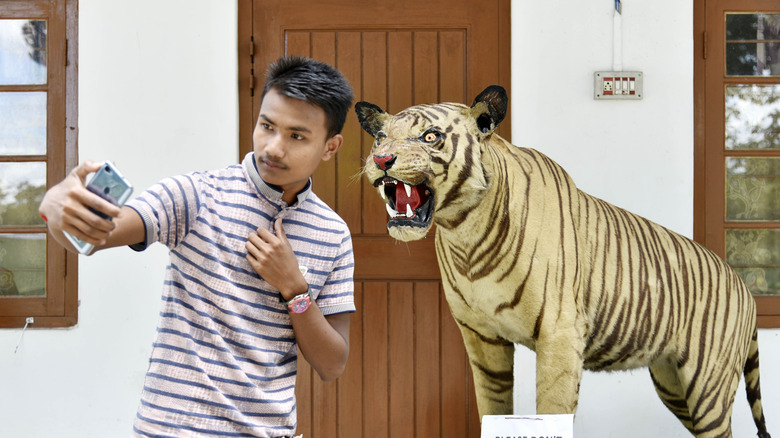
Do you remember the “tiger selfie” craze? Unless you happened to be on Tinder in New York circa 2014, probably not. There was a sudden wave of people posing for their dating profiles in front of big cats — i.e. lions and tigers. At one point, anecdotal estimates suggested for every 10 dating profiles, one featured a big cat in the backdrop. The reason why is up for interpretation; probably to appear tough, manly, or adventurous for a prospective mate, like some modern-day mating ritual. Whatever the intention, it drew New York State’s attention.
New York swiftly banned these selfies at carnivals, zoos, and other places featuring big cats. Initial reports suggested it was because of the danger. Most people are woefully ignorant of how easy it is to provoke a wild beast like this into violence. So, it was only a matter of time before there’d be a string of grisly maulings, right?
That’s one part, but the core reason is more depressing: to prevent exploitation. Tigers and lions are often caged, then sedated or tied down to make them more docile for pictures. Unbeknownst to many, it’s illegal to buy and sell big cats without a zoo or wildlife preserve permit. The controversial docuseries “Tiger King” on Netflix provided such a glimpse into the world of abused big cats trotted out for tourists’ pictures. Long story short, don’t take a tiger selfie in New York — or, arguably, anywhere.
Bear selfies in South Lake Tahoe, California
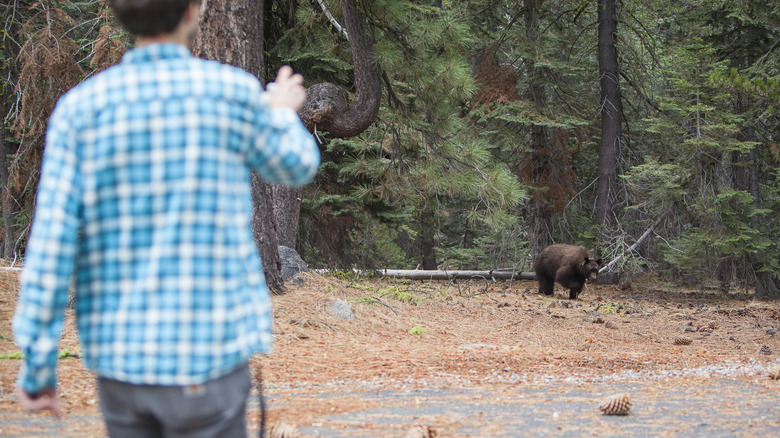
What is the human obsession with getting close to animals capable of ripping them limb from limb? We may never know. The problem’s bad enough that there was another animal selfie craze that required authorities to clamp down in South Lake Tahoe, a Californian lake city in the Sierra Nevada mountains — one we recommend planning a trip to. As you may have guessed, bears roam this pristine little slice of nature, enough that people often run into one. There’s even a “criminal” bear named Hank the Tank, captured and relocated after breaking into at least 20 different homes. Some not-too-bright visitors decided that instead of getting to safety when seeing a bear, it was the ideal time to pull out their phones.
Though this isn’t an explicit ban, it is a strongly-worded warning. Like with the tiger selfies, tons of pics started popping up on social media of bear selfies. Bears are exceptionally easy to provoke and can run faster than you, so putting them in frame with your back to them is an incredibly risky idea. Although there don’t appear to be any injuries or deaths related to bear selfies in South Lake Tahoe specifically, bear selfie deaths have happened before. In 2018, a man in Odisha, India was mauled to death for trying to take a bear selfie. If it wasn’t obvious already, stay far, far away from wild animals if you like being alive, selfie ban or not.
Bull selfies in Pamplona, Spain
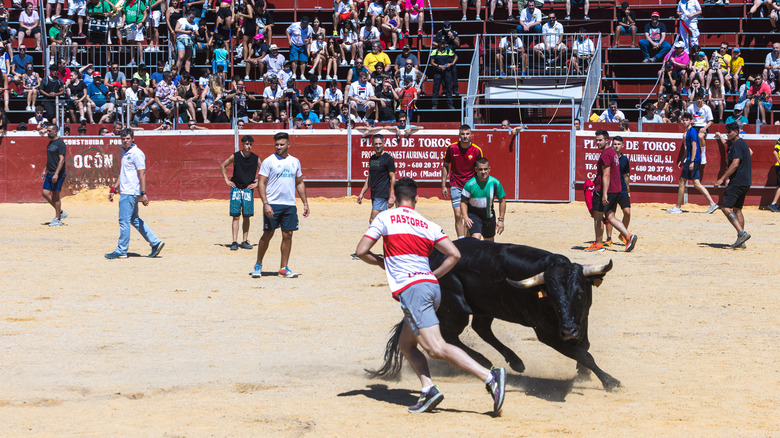
David Benito/Getty Images
Bull runs are a well-known tradition originating from Spain, made world-famous in Hemingway’s novel “The Sun Also Rises.” The city of Pamplona is where it’s most renowned. The history of the event dates begins when medieval bull owners would “run” them through town to the bullring, where they’d be sold or slaughtered. These days, it’s a festival where mad bulls are loosed along a stretch of Pamplona’s tight, serpentine streets. Men with more bravado than sense get as close as they can without getting gored — made more difficult since the law forbids “grabbing a bull by the horns.” Every year, dozens end up in the hospital, and 16 have died since recordkeeping began in 1910.
Critics have lampooned the event for reasons of animal cruelty and safety, but there seems to be no end in sight. But to make a ludicrously dangerous spectacle a bit “safer,” officials have legally banned photo and selfie-taking during the runs — including so much as holding a recording device. Should you ignore this, you’ll pay a hefty $4,000 fine. Officials aren’t joking around here, either. When an unknown man was caught snapping pics in an event photo, a torch-and-pitchfork Twitter campaign attempted to identify him for authorities. You’re probably seeing a common theme here. Don’t get close to dangerous animals, whether or not you’re taking a selfie, and whether or not it’s legal.
Tower of London’s Jewel House, UK
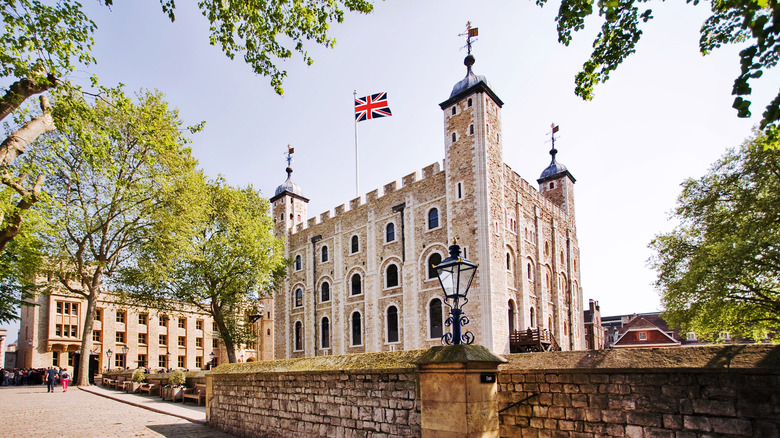
Justin Black/Shutterstock
The Tower of London (not to be confused with Big Ben) is a museum where you can peruse a collection of 23,578 royal gemstones, including the Crown Jewels worn by generations-long dynasties and monarchs throughout England’s history. Some of the regalia on display are still in use to this very day in national ceremonies. That’s right, you can get within inches of crowns laden down with precious diamonds, emeralds, and rubies, worth upwards of $5.8 billion.
Selfies are explicitly banned in the Jewel House for a reason that sounds like something out of a “Mission Impossible” movie: officials fear that thieves might use the pictures to help them plan a heist to steal the royal family’s treasure. The ban is strict enough that tripods and selfie sticks are forbidden on the premises. Should you visit the Jewel House, you’ll probably notice a heavy guard presence and a ton of closed-circuit television (CCTV) cameras — understandable for a collection worth as much as a small nation.
It’s not clear what happens if you decide to break these rules. Our best guess is that you’ll be forced to delete the pictures, then escorted away and slapped with a lifetime ban. We imagine thieves tenacious enough to spirit away such a priceless haul wouldn’t case the place with selfies, but regardless, don’t poke the sleeping bear. Save the selfies for London’s other attractions that you don’t want to miss.
No Braggies Zones at Garoupe beach, France
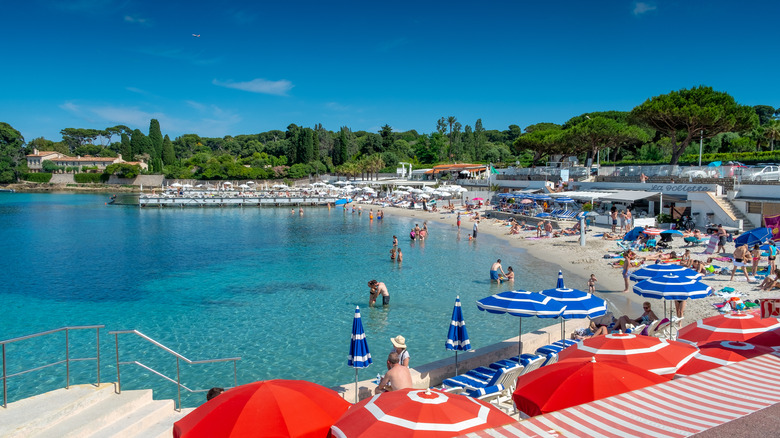
JosephWGallagher/Shutterstock
Some would argue (with good reason) that our obsessive vacation picture-taking has gotten out of hand. Photo-worthy areas around the world have literal lines of people vying for that perfect “candid” Instagram shot, ruining things for everyone else who’s just trying to experience the moment. The debate on the subject is fierce. Some say it’s a free country, so do as you will; others say folks need to put their phones down, for the love of all that is holy. The popular Garoupe beach in France has weighed in on the matter unlike any other place on earth: certain designated zones are braggie-free — braggie being a French synonym for selfie.
It’s not a legal ban, per se, but rather one where this bad behavior is shamed out of existence. There’s a so-called “Holiday Spam Police” that roves these areas in search of wannabe influencers sneaking suggestive bikini and hot-dog-leg pics. To aid their efforts, Garoupe has enlisted everyone else to the cause. If you spot a braggart on social media, you’re to put the hashtag #holidayspam on the post like a red letter A on Hester Prynne. The reason behind all this is twofold. One, officials want people to enjoy the beaches with their eyes, not their cameras. Two, they’re tired of holiday bragging — that is, people on vacation showing off to those who aren’t. Ban or not, it’s good advice to better enjoy your beach trip.
Holy sites in Mecca and Medina, Saudi Arabia
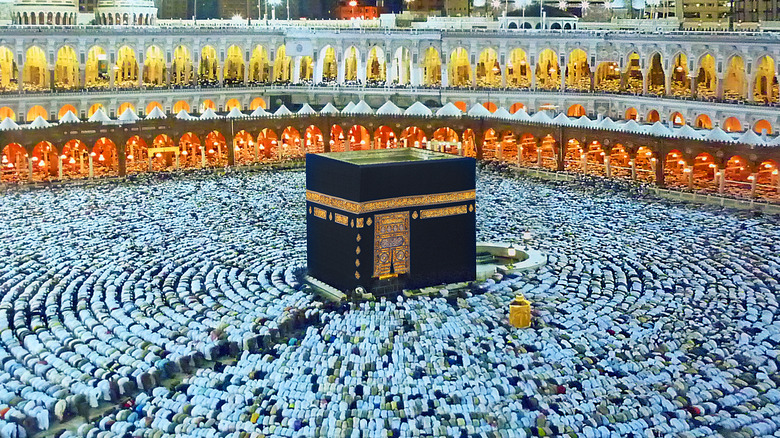
Prmustafa/Getty Images
Mecca is the holiest place on Earth for Muslims, the birthplace of Muhammad, and the location adherents point themselves toward when they do their daily “qibla” prayers. You’ve likely seen its most famous monument before. It’s an enormous black box trimmed with gold, known as the Kaaba, situated in the center of the Great Mosque. People on pilgrimage will then circle the Kaaba in a mesmerizing display of worship. As you can imagine, this is Islam’s “inner sanctum,” as it were, one visitors are expected to demonstrate the utmost respect and reverence for. As a result, a massive controversy broke out when a visiting blogger took some selfies and posted them online.
It’s not clear if this was the catalyst that led to the ban. Regardless, visiting pilgrims are now disallowed entirely from personal photography anywhere inside the Grand Mosque. This ban extends to another holy site in Saudi Arabia. Mohammed’s tomb in the city of Medina, known as the Masjid an-Nabawi, enforces the same restriction. Punishment for taking a selfie in either place could be severe. Entering Mecca as a non-Muslim purportedly results in fines, imprisonment, and deportation. We imagine breaking the selfie rule would invite a less-than-pleasant response. To be fair, there are similar bans in holy places across the world for religions of all kinds. It’s best practice to ask permission to take pictures at locations of veneration as a matter of course.
Mumbai oceanfront, India
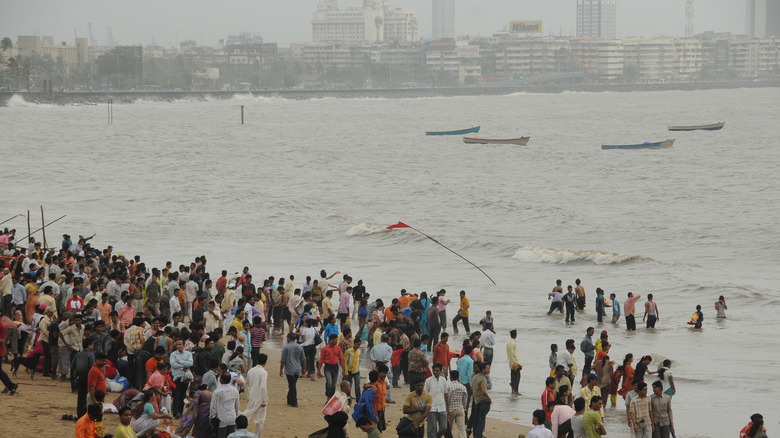
CRS PHOTO/Shutterstock
It doesn’t take a dangerous animal for a selfie to lead to one’s death. According to one study, 379 people have lost their lives across the world as a result of their selfies between the years 2008 and 2021. You can probably imagine how many of these tragic deaths happened. People getting too close to the edge of a tall drop-off, or a fast-running body of water. Many are accidents, and many a result of bad judgment. Mumbai had such a rash of fatal selfies that they were, at one point, the deadliest place on earth for the selfie-taker. Nineteen “selfie” deaths occurred there over a three-year period alone.
The problem appears to be most concentrated in the city’s oceanfront, with many of the deaths involving drowning. In response, the local government established no-selfie zones with signs marking out the areas deemed to be at highest risk. Law enforcement was deployed to patrol these areas, and lifeguards were put on standby if push came to shove. There seem to be no reports of selfie deaths out of Mumbai since, but visitors to Mumbai should exercise caution regardless as selfie deaths continue to happen around the world with every passing year. Being careless for a couple of meaningless online likes is not worth your life.
Portofino, Italy
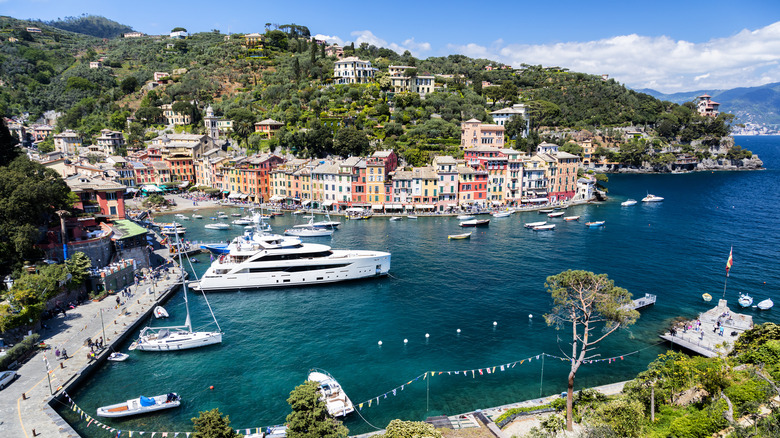
Bim/Getty Images
Portofino is a tiny town of less than 500 people, one you may not even have heard of when planning a trip to Italy, but one you should absolutely visit. Its claim to fame is an idyllic harbor with colorful buildings sitting against a hill laden with olive trees and vineyards. Italy’s best all in one little package. Naturally, they get a ton of tourists, far more than its small streets were ever designed to handle — streets that are so picturesque they demand a picture. Selfie and picture-takers always seem to have the bad habit of clogging up footpaths and narrow streets in their quest for that magnum opus duck-lips portrait. You can see where this is going.
As of this year, Portofino has established “no-waiting zones.” If caught hanging around too long to take pictures, you’ll bring home a very special souvenir from Portofino: a €275 fine, equivalent to $305. Mayor Matteo Viacava declared that he was fed up with the “anarchic chaos” the influencer crowd kept creating by disrupting the flow of traffic. The only time you can snap a non-illegal, guilt-free shot is from 6 p.m. until the next morning. It’s not a year-round ban; the no-waiting zones don’t apply once the heaviest of the tourist season ends in October, starting again the following Easter. If going without taking a picture every few steps seems unpleasant, maybe visit this underrated Italian town instead.
Sistine Chapel, Vatican City
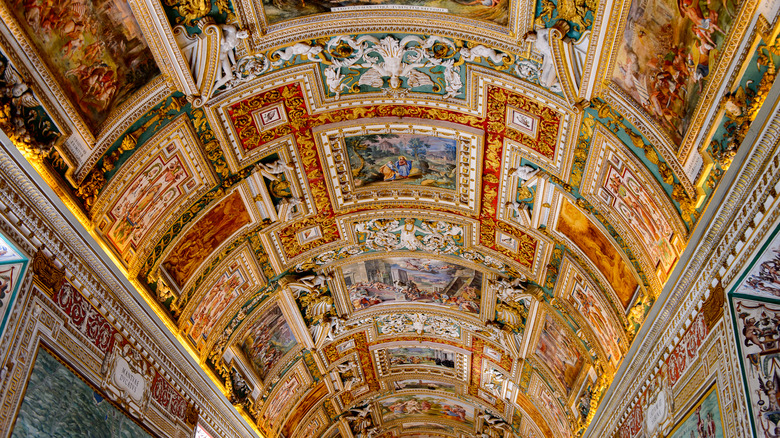
Anton_Ivanov/Shutterstock
Few are aware that when they visit the Sistine Chapel, they aren’t seeing Michaelangelo’s jaw-dropping artwork left untouched. They’re seeing a modern renovation. Beginning in the ’80s, the Vatican kicked off a 20-year ceiling restoration to painstakingly remove hundreds of years of accumulated smoke residue and grime. The result? Clean imagery bringing it as close to its original 1483 glory as possible. But that restoration came at a cost; the Vatican gave the photo rights to a Japanese company (Nippon TV) in return for bankrolling the restoration project. Much of the original professional photos and footage belong to this company, and it created the unintentional side effect of a photo ban for all.
Full disclosure, Nippon TV no longer has the photography rights. They expired in 1997, three years after the project reached completion in 1994. So, why is the ban still in place? Two words: flash photography. Strong light damages artwork, so the flash from thousands of cameras every day effectively “chips away” at the irreplaceable Sistine ceilings. That said, some have noted that the ban isn’t very strict. Tons of unabashed photo-takers get nary a blink from the guards. Even if the rulebreakers and the guards don’t care, though, we advise against selfies out of respect. If you’re still going to do it, at the very least double-check that your camera’s flash is off. Most phones these days have a very respectable night mode, thus avoiding the risk of damage.
Anne Frank House in Amsterdam, Netherlands
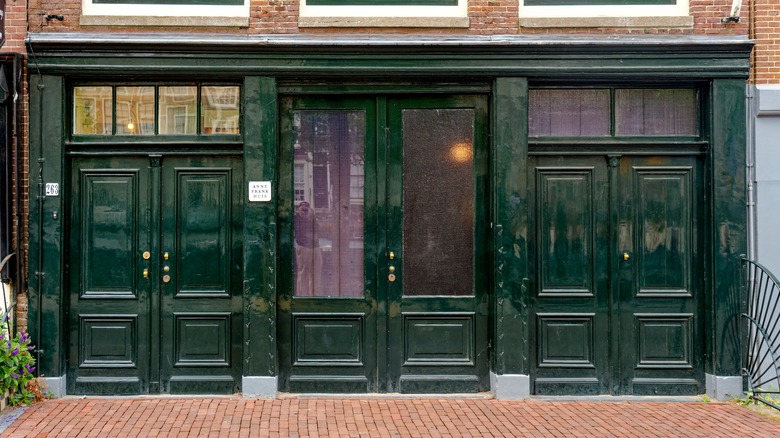
Darryl Brooks/Shutterstock
Anne Frank was a bright light in a dark place; A Jewish girl who gave us a optimistic account of her life via her journals, all the while hiding from the Nazis in an Amsterdam home during the Third Reich’s occupation. She died in a concentration camp shortly after. For those who want an intimate look at the lives of the holocaust’s very-real victims — people who might still be alive today — you can take a tour of the very house where Anne waited in hiding and penned her journals. What you should absolutely not do, however, is take selfies. These and any other photography are banned.
Amsterdam’s official reason for the ban is to avoid “causing a nuisance” to other visitors, but it’s troubling that it needs to be said at all, and brings up a recurring problem with people letting social media get in the way of common decency. Back in 2017, there was an explosion of selfies taken at Auschwitz. It ought to be fairly obvious that no one should be posing in front of a location where thousands were murdered, but similar situations keep happening year after year. Ban or not, be extra conscious of where you take your selfies. A selfie is a lighthearted, cutesy bit of navel-gazing that’s not suited for all situations.
Taj Mahal, India
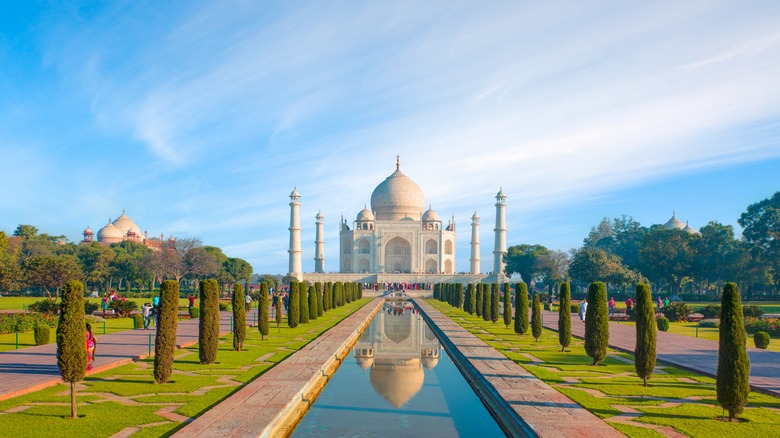
muratart/Shutterstock
The Taj Mahal is probably one of the most well-known tourist destinations in the world, one where photography was already banned inside the main mausoleum. That’s why you’ll only ever see pictures of people on the outside. As of 2017, however, selfies got the thumbs down as well in the Taj Mahal and dozens of other curated museums. This isn’t a loose ban like the Sistine Chapel. Guards are on alert for selfies and will crack down on them — so don’t think you’re quick enough to nab a fast one.
Part of the reason, allegedly, is to prevent official photographs of the premises from losing their value. The Indian government wants to profit from professional photos taken of the area. It’s also a question of sanctity and respect. This isn’t just a pretty building, it’s a tomb dedicated to once-emperor Shah Jahān’s wife. You’d be a bit more circumspect about taking pictures at a graveyard, so the same applies here.
Another reason appears to be safety. In 2015, a Japanese tourist who was taking a selfie fell to his death down the stairs, and his friend fractured a leg. Authorities have since installed protective railings around the premises to prevent anyone else from toppling over the edge. If you’re hankering for a selfie at the Taj Mahal, you can still do so at the main monument. Just pay close attention to your surroundings — as you should when taking a selfie anywhere in the world.

